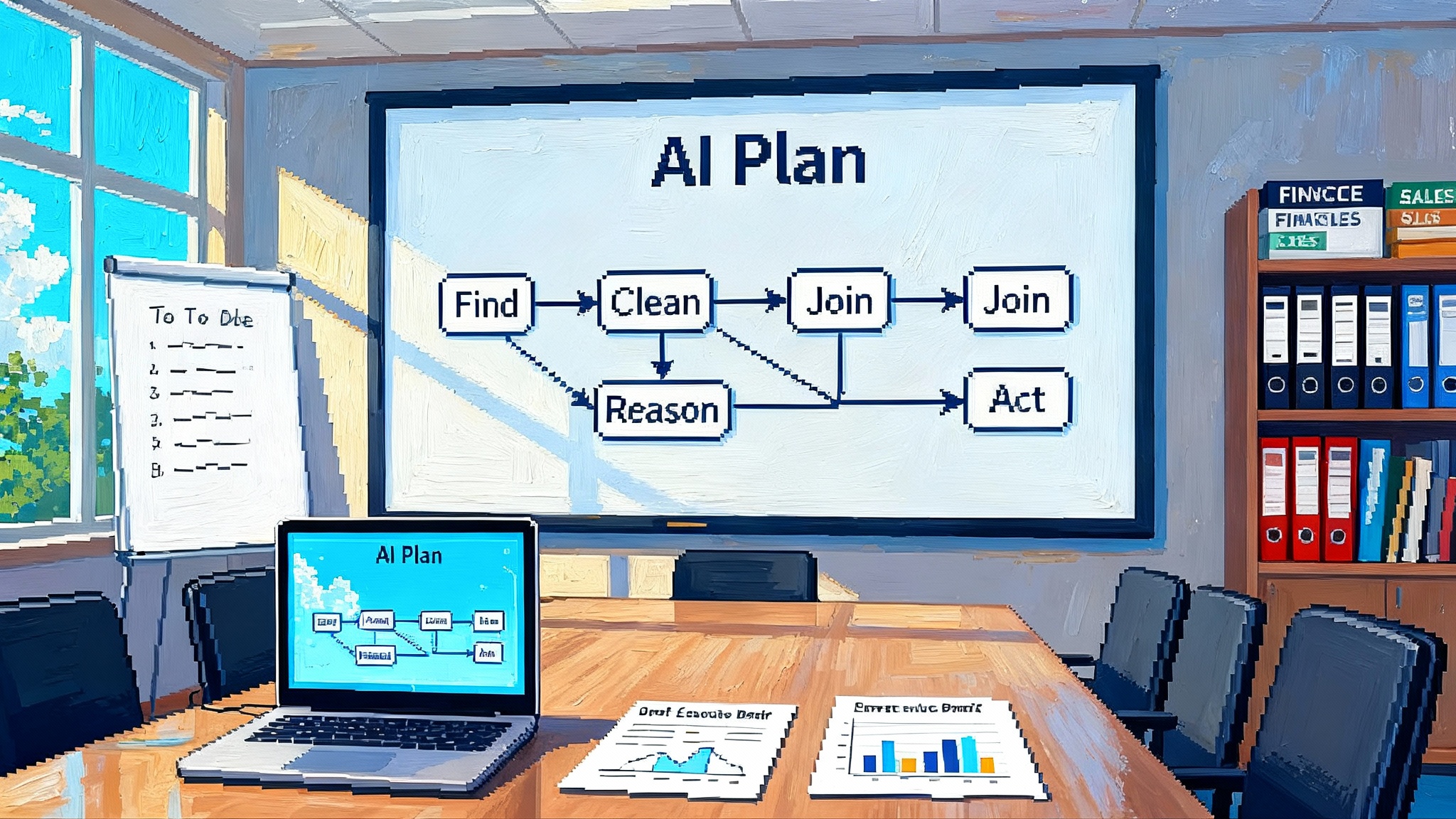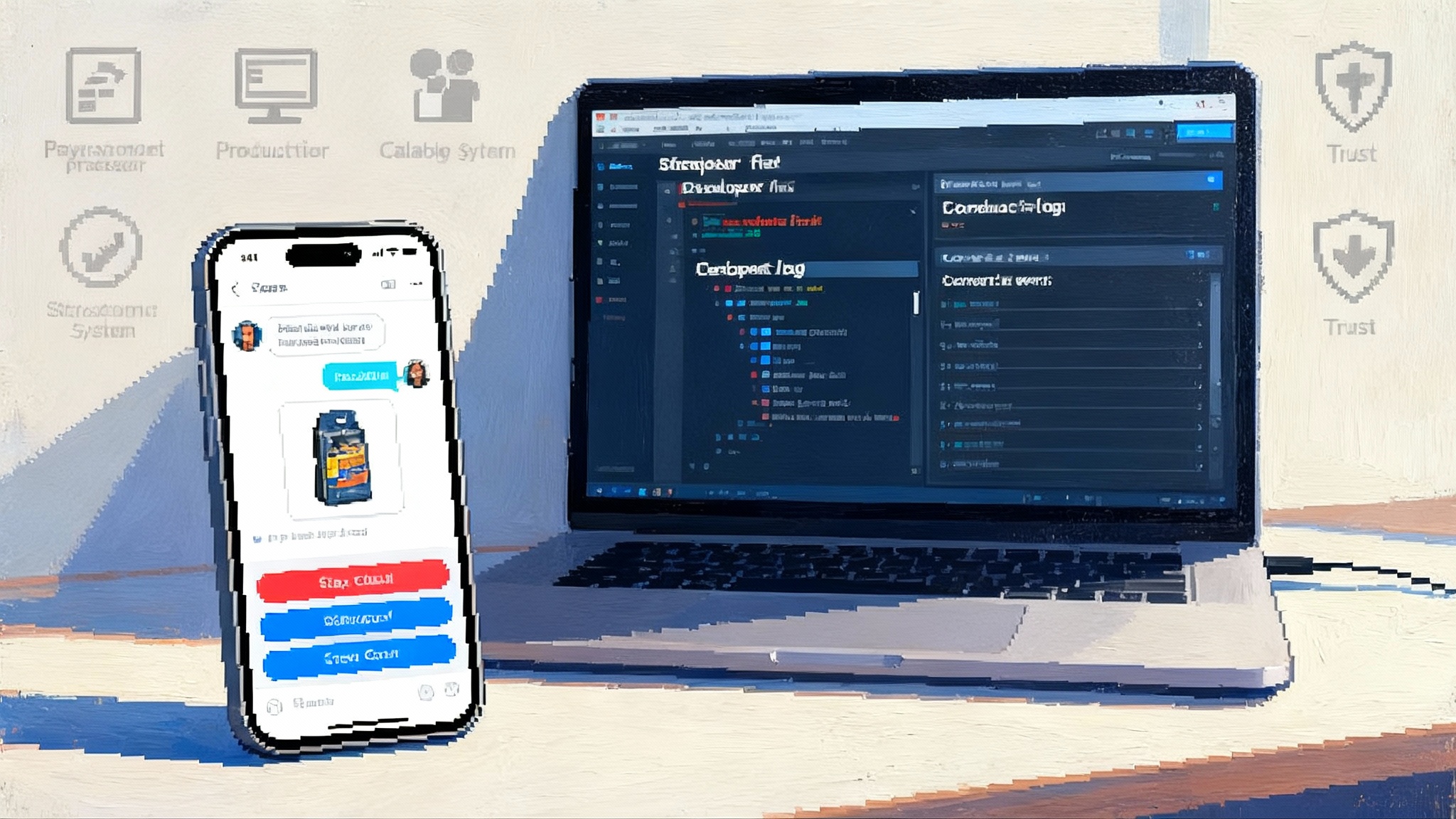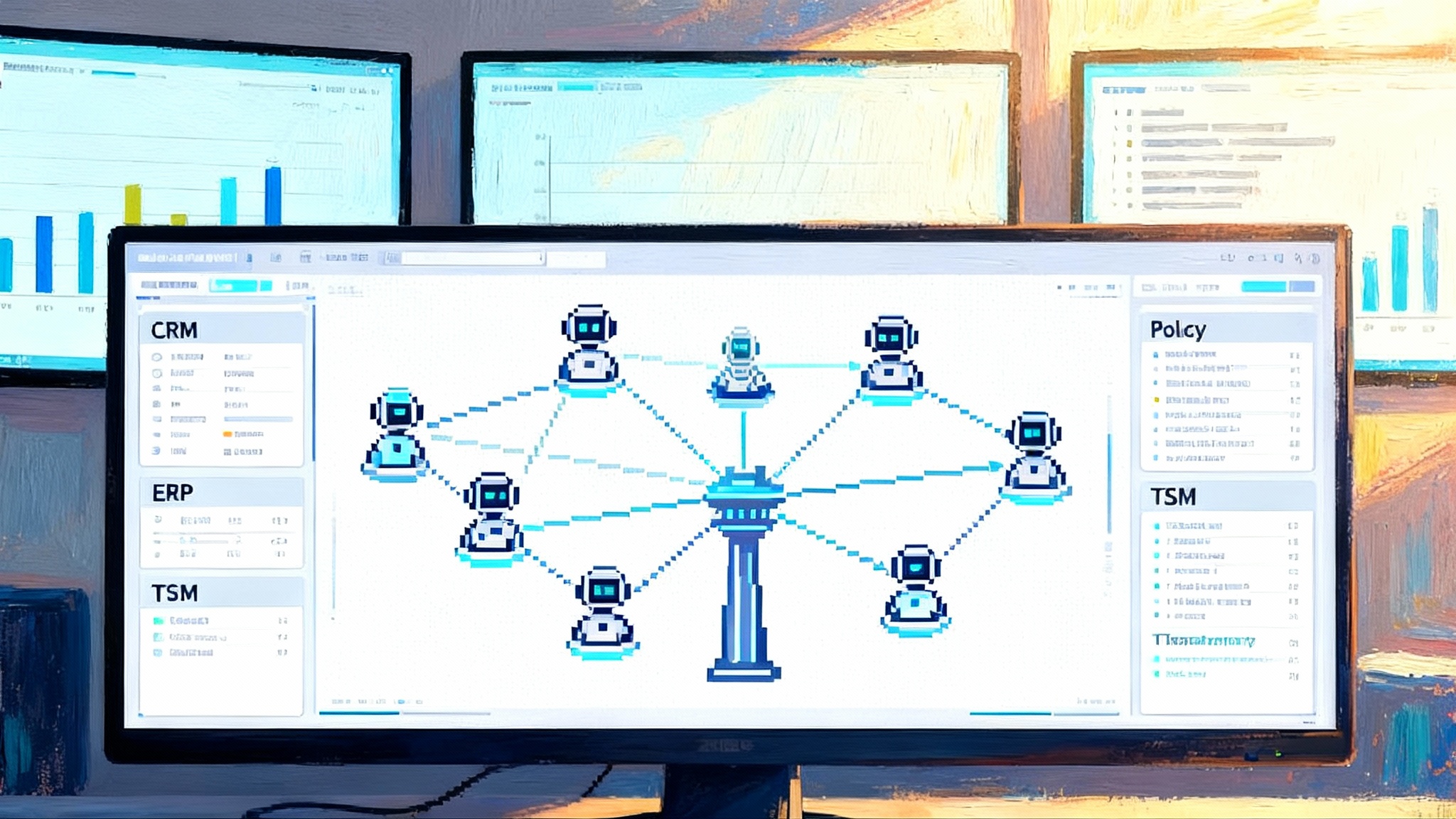Inbound sales goes autonomous as Spara’s $15M puts AI reps first
Spara emerged on September 15 with a $15 million seed round and a working agent that handles voice, chat, and email to qualify leads and book meetings. Here is why inbound will automate first and how to ship it in 30 days.

Breaking: inbound sales just crossed an autonomy line
On September 15, Spara stepped out of stealth with a $15 million seed round and a production product that puts autonomous agents in front of inbound sales traffic. The pitch is simple. Give every qualified visitor a human grade conversation on voice, chat, or email, then qualify, route, and book the meeting inside the systems you already trust. That story matches what many teams have observed over the past year. The closer a task is to structured intent and clear handoffs, the faster it goes autonomous. See the Business Insider coverage of Spara for the funding and product snapshot.
Inbound work is exactly that kind of task. These are users who already filled out a form, clicked Pricing, or called your sales line. Goals are measurable. Guardrails are legible. Success is a booked meeting or a correctly routed ticket, not a fuzzy great conversation. The result is a rare sweet spot where speed and precision beat charisma and memory.
Why inbound will automate before everything else
Think of revenue as a factory line. Outbound is quarrying raw ore. It is noisy, low yield, and multi touch. Inbound is the fit and finish station where parts are pre shaped. Inputs are structured. Outcomes are binary. The number of legal moves is small. That is a perfect playground for agents.
- Intent is explicit, not guessed. Visitors click Talk to Sales, schedule a demo, or dial a sales number. An agent can follow a short decision tree without cold read theatrics.
- Latency matters more than charm. Speed to lead is the best predictor of conversion for inbound. Agents respond in seconds, consistently, at any hour, without getting tired or distracted.
- The data already lives in your core systems. Inbound conversations enrich a lead, attach to the right account, and drop a meeting on a calendar. Those are deterministic operations when your plumbing is right.
Under these conditions, autonomous agents do not need to invent a personality or master your entire product catalog. They need to follow crisp rules, reference a small knowledge base, and take reliable actions. That is why inbound will beat outbound and field sales on the road to autonomy.
Narrow beats broad in the first inning
September also delivered a headline that puts Spara’s focus in context. Enterprise agent platforms are raising mega rounds to generalize agents across support and operations. Sierra confirmed a $350 million round at a $10 billion valuation, focused on enterprise customer service. See the TechCrunch report on Sierra funding for details.
This contrast matters. General purpose copilots must juggle many jobs with one brain. Inbound only agents solve one job with obsessive fit and finish. Which fields to write in your CRM. What tone is on brand. When to escalate. How to schedule across complex calendars. The value lives in the seams, not in a new model weight. In early markets, teams that pick a narrow, measurable slice tend to ship faster, hit cleaner KPIs, and avoid the failure mode of shallow integrations.
If you follow our prior coverage of agentized stacks in enterprise, this tracks with the way platforms like OutSystems Agent Workbench GA have brought real world discipline to agent deployments. The lesson is consistent. Pick a concrete job, wire it into your systems, and measure what matters.
What Spara’s stance signals
- Narrow scope beats generic copilots today. A single task with a deterministic outcome, plus serious enterprise plumbing, outperforms a broad assistant that stops at the edge of your CRM.
- Brand voice alignment is a feature, not a tagline. The first two lines of an agent greeting, the way it handles competitor questions, or the exact handoff language to a human can move meeting rates in double digits. Learn it once, reuse it everywhere.
- CRM native behavior wins trust. If an agent enriches the lead, logs the transcript, triggers a playbook, and books a meeting with no swivel chair data entry, adoption sticks. If it demands new dashboards and parallel processes, it dies in pilot.
How to build an autonomous inbound flow that works
What follows is a blueprint you can ship. It assumes your goals are to reduce response time, increase meetings per visitor, and improve customer acquisition cost payback.
1) Wire the data plumbing the right way
Start with the sources of truth and the systems that govern identity. Define what the agent must read and write on day one.
- CRM objects and fields. Map Lead, Contact, Account, and Opportunity, plus custom fields for product interest and priority. Define the minimum writable fields for a qualified lead. Email, phone, company, role, problem statement, and ideal meeting timeslot.
- Calendars and routing. Connect primary calendars and routing logic. If you use round robin or territories, codify them behind a small routing service. Do not bury them in prompt lore.
- Chat, call, and email archives. Index transcripts and common objections. Use this as a retrieval corpus for safe, grounded answers. If you have call intelligence tools, export labeled moments like budget mentioned or competitor mentioned to seed your evals.
- Product and policy facts. Maintain a small, versioned knowledge base for pricing guardrails, trial terms, security stances, and what not to promise. Give it an owner and a change process.
- Events and audit. Every action should emit events such as lead.created, note.added, meeting.booked, escalation.requested. Store them with timestamps and correlation IDs so you can debug and report.
Checklist to finish this step:
- Identity resolution rules that merge leads into the right account
- A field mapping document for reads and writes, including allowed values and formats
- A sandbox environment with sample data and masked personal information
2) Build an evaluation harness for tone, safety, and correctness
Treat the agent like a new hire. You would not put a rep on the floor without a script, a test, and a coach.
- Tone packs. Create three to five tone profiles that reflect your brand. Warm and concise. Technical and direct. Empathetic and consultative. For each tone, provide three approved openings, three closings, and ten phrases to avoid.
- Safety policies. Define hard rails. No pricing commitments beyond the knowledge base. No personal advice in regulated categories. Disclose recording before a voice call proceeds in two party consent jurisdictions. Obtain consent to store personal information.
- Test sets. Assemble 100 to 300 real inbound scenarios from forms, chats, and calls. Include adversarial cases like discount bait, competitor probing, and compliance edge cases. Label expected actions and acceptable variations.
- Scoring. Automate pass or fail on factuality, policy adherence, and action completion. For tone, use a rubric scored by humans weekly until you trust automated classifiers.
- Drift checks. Run the suite daily on the latest prompts and knowledge. Alert on drops larger than two percentage points.
Deliverables from this step:
- A reproducible evaluation script and a dashboard your team reads
- A weekly review with sales and legal owners
- A redline document with prohibited claims and escalation triggers
3) Choose integration and telephony that respect contracts
Your stack should treat integrations as contracts, not brittle hacks.
- Standardized tool calling. Adopt a model context protocol that cleanly separates prompts from plumbing. Define tools for scheduling, enrichment, routing, and knowledge lookup with explicit schemas. That lets you swap models without rewriting your stack.
- Telephony layer. For voice, pick a provider with call ingress, consent aware recording, speech to text, text to speech with selectable voices, and low latency streaming for barge in so callers can interrupt. Verify support for call whisper and warm transfer to humans.
- Routing service. Encapsulate your rules behind a simple contract. Given a lead and constraints, return available slots and an assignee. Keep ownership logic out of prompts.
- Storage and audit. Write all conversations and actions to an append only log with pointers inside your CRM. You will need this for compliance reviews and debugging.
Non negotiables:
- Observability at the token and turn level, not just summaries
- Feature flags to disable pricing talk, custom features, or sections of the knowledge base during incidents
- A shadow mode where the agent proposes actions while a human still responds
For readers building broader agent programs, the patterns here echo what we covered in Agents move into the database. Tight contracts and observable actions are what make agents production grade.
4) KPIs that matter and how to calculate them
Start with four metrics that create a tight loop between visitor behavior and revenue.
- Speed to lead. Median seconds from form submit or call connect to first agent response. Target single digit seconds for chat, under 30 seconds for voice, under 60 seconds for email reply suggestions.
- Meetings per visit. Sales meetings booked divided by unique visits to high intent pages such as Pricing and Contact Sales. Track by segment, campaign, and device.
- Agent qualified rate. Share of conversations that meet the acceptance criteria you already use for sales qualified leads. Use your existing SQL rubric so you can compare apples to apples.
- CAC payback. Months to recover blended customer acquisition cost from gross margin. Break out agent influenced pipeline so finance can verify that payback is improving rather than shifting costs.
Helpful supporting metrics:
- Escalation rate and time to human
- First contact resolution for simple requests like partner referrals or security questionnaires
- Knowledge base hit rate versus freeform model answers
5) Risks and how to control them
- Compliance and consent. Voice calls often require explicit consent for recording in two party consent states. Add a short disclosure at the start and branch on the response. For email and chat, handle data retention and privacy requests through your existing channels so you do not create a second system of record. For outbound callbacks and texts, follow the Telephone Consumer Protection Act and internal do not call rules even if the original touch was inbound.
- Hallucinations and overpromising. Lock your agent to a small, versioned knowledge base. Use retrieval with citations to your own documents for sensitive answers. Anything involving pricing exceptions, legal terms, or roadmap should escalate.
- Routing failures. A near miss on routing can tank trust. Build circuit breakers that fall back to a generic book with sales queue if the routing service fails. Always show a confirmation with the calendar invite link inside the chat or email thread.
- Brand drift. Tone can degrade as prompts change. Protect it with tone packs, weekly scored reviews, and a phrase bank regenerated from your top human transcripts.
A 30 day rollout playbook
You can put a production grade inbound agent in the field in one month if you scope tightly and ship in slices.
Week 1: Discovery and scaffolding
- Choose two high intent entry points. For example, the Pricing page chat and a sales phone line during off hours.
- Map minimum field writes in your CRM. Define the meeting booking contract and configure calendar routing.
- Stand up a knowledge base with five product facts, five policy points, and five approved answers to common objections. Keep it small and accurate.
- Implement shadow mode to record what the agent would have said and done while humans still respond.
Week 2: Evaluation harness and pilot
- Build the first 150 scenario test set with pass or fail labels and tone scores.
- Turn on live chat for a limited segment, for example United States traffic between 5 p.m. and 9 p.m. local time.
- Add voice intake for after hours with explicit recording disclosure. Keep warm transfers disabled at first.
- Hold daily standups with sales, marketing, and legal to review transcripts. Update the knowledge base and tone packs from findings.
Week 3: Scale pathways and guardrails
- Enable warm transfers to humans during business hours with a clear handoff script. Add call whisper so the human knows context before saying hello.
- Expand chat coverage to all high intent pages and enable email reply suggestions for inbound demo requests.
- Integrate your event bus and warehouse to automate reporting. Start tracking meetings per visit by page.
- Create incident runbooks for knowledge mistakes, routing failures, and model outages. Add an on call rotation and a single Slack or Teams channel for escalations.
Week 4: Production readiness and measurement
- Turn on 24 by 7 chat and after hours voice for your target region. Keep business hours voice behind a traffic gate while you tune transfer quality.
- Run the evaluation harness daily and publish a scorecard with speed to lead, meetings per visit, agent qualified rate, escalation rate, and top escalations by cause.
- Review CAC payback assumptions with finance using agent influenced pipeline. Look for a significant lift in meetings per visit on your Pricing page.
- Freeze the prompt and tone packs for one week to stabilize. Start a change control cadence with clear owners.
The bigger picture for go to market teams
The headline today is Spara, but the shift is broader. Inbound is the first revenue function with the right mix of structure, urgency, and data gravity to go autonomous. It rewards teams that treat brand and plumbing as first class citizens. This aligns with an adjacent trend we covered in Chat to Checkout is live, where tight loops from intent to action beat sprawling assistants every time.
The playbook is simple, but it is not easy. Pick a single high intent path. Wire it into your systems. Measure every step. Teach your agent to sound like you. Give it guardrails and a fast human escape hatch. Do that for one entry point, then a second, then a phone line, and you will wake up to a sales floor that never sleeps and never forgets to log a call.
If you are evaluating vendors, your questions should be practical. What fields do you write and when. How do you decide ownership and scheduling. What happens when routing fails. How do you disclose and store consent. Show the eval harness and the last 30 days of scores. Show the logs for a real conversation where the agent handled an objection, booked a meeting, and logged everything correctly. Teams that can show this in a live environment are ready. The rest are still pitching.
A concise checklist you can copy today
- Define minimum lead fields, ownership rules, and the meeting contract
- Build a 150 scenario test set with policies and a tone rubric
- Ship shadow mode, then limited chat, then after hours voice
- Wire events into your warehouse and publish a daily scorecard
- Escalate anything involving pricing exceptions, legal terms, or roadmap
- Freeze prompts for a week once you hit green metrics, then move to controlled changes
Autonomy in inbound is no longer a thought experiment. With the right scope and plumbing, it is a 30 day implementation with a measurable payback window and a clear ladder to full coverage. Build the rails, ship the agent, and let your human reps spend their time where it counts. The conversations only humans should have.






